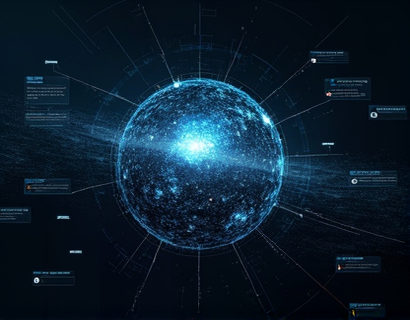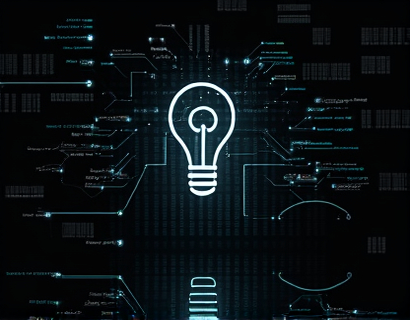Maximizing Multi-Channel Announcements: Streamlining Communication for Businesses and Audiences
In today's fast-paced digital landscape, businesses and individuals face the challenge of effectively communicating with their audience across multiple channels. The ability to make impactful announcements that reach and engage diverse audiences is crucial for success. This comprehensive guide delves into expert strategies for streamlining multi-channel communication, enhancing message visibility, and fostering stronger connections with your audience. By leveraging a powerful and user-friendly platform, you can optimize your announcement process and ensure maximum reach and effectiveness.
Understanding the Importance of Multi-Channel Communication
Multi-channel communication involves using various platforms and channels to reach your audience. This approach is essential because different segments of your audience may prefer different methods of communication. For instance, while some may prefer email updates, others might be more active on social media platforms like Facebook, Twitter, or LinkedIn. By utilizing multiple channels, you increase the likelihood of your message being seen and heard by a broader audience.
The benefits of multi-channel communication are manifold. It enhances brand visibility, improves customer engagement, and provides multiple touchpoints for interaction. A well-coordinated multi-channel strategy ensures that your message is consistent across all platforms, reinforcing your brand's identity and building trust with your audience. Moreover, it allows for targeted messaging, enabling you to tailor your announcements to specific audience segments based on their preferences and behaviors.
Challenges in Multi-Channel Announcements
Despite its advantages, multi-channel communication comes with its own set of challenges. One of the primary issues is the complexity of managing multiple platforms simultaneously. Each channel has its unique features, audience demographics, and best practices. This can lead to a fragmented approach if not managed properly, resulting in inconsistent messaging and a diluted brand presence.
Another challenge is ensuring that announcements are timely and relevant across all channels. Delayed or out-of-context messages can confuse your audience and diminish the impact of your communication efforts. Additionally, monitoring and analyzing performance across multiple channels can be time-consuming and resource-intensive, making it difficult to gauge the effectiveness of your strategy.
Streamlining Your Communication Strategy
To overcome these challenges, it is essential to streamline your communication strategy. This involves selecting a robust platform that simplifies the process of publishing updates across various outlets and social media channels. Such a platform should offer a user-friendly interface, comprehensive features, and seamless integration with your existing tools and workflows.
A powerful platform can centralize your content creation and distribution processes, allowing you to manage all your channels from a single dashboard. This not only saves time but also ensures consistency in messaging and branding. By automating routine tasks, you can focus on crafting high-quality content and engaging with your audience more effectively.
Key Features to Look for in a Multi-Channel Communication Platform
When choosing a platform to streamline your multi-channel announcements, consider the following key features:
- Centralized Content Management: A dashboard that allows you to create, schedule, and publish content across multiple channels from one interface.
- Cross-Platform Integration: Seamless integration with major social media platforms, email services, blogs, and other communication tools to ensure a cohesive presence.
- Customizable Templates: Pre-designed templates for different types of announcements to save time and maintain brand consistency.
- Analytics and Reporting: Built-in analytics to track performance, engagement, and audience insights across all channels.
- Collaboration Tools: Features that enable team members to collaborate on content creation and approval processes, streamlining workflows.
- Mobile Optimization: Ensuring that your content looks great and functions well on mobile devices, where a significant portion of your audience may be accessing your announcements.
By prioritizing these features, you can select a platform that not only simplifies your communication process but also enhances the overall effectiveness of your announcements.
Optimizing Announcement Content for Maximum Impact
Content is the heart of any communication strategy. To maximize the impact of your multi-channel announcements, focus on creating compelling and relevant content tailored to each audience segment. Here are some strategies to optimize your content:
First, understand your audience. Conduct research to identify the preferences, behaviors, and pain points of different segments. This knowledge will help you craft messages that resonate and address their specific needs. Personalization goes beyond just using the audience's name; it involves addressing their concerns and providing value through your announcements.
Second, keep your messages clear and concise. In a world where attention spans are short, especially on social media, brevity is key. Use simple language, avoid jargon, and get straight to the point. Break down complex information into digestible chunks, using bullet points, short paragraphs, and visuals where appropriate.
Third, leverage visual elements to enhance engagement. Images, videos, and infographics can make your announcements more appealing and shareable. Visuals not only capture attention but also help convey information more effectively. Ensure that any visual content is high-quality and aligns with your brand's aesthetic.
Fourth, use calls to action (CTAs) to guide your audience's next steps. Whether you want them to visit your website, sign up for a newsletter, or share the announcement, clear and compelling CTAs can drive desired actions. Test different CTAs to see which ones perform best across various channels.
Timing and Frequency of Announcements
The timing and frequency of your announcements play a crucial role in their success. Posting too frequently can lead to audience fatigue, while posting too infrequently may result in missed opportunities. Finding the right balance is essential.
Consider the peak activity times of your audience on each platform. For example, LinkedIn users are more active during weekdays, while Instagram engagement spikes in the evenings. Use analytics to determine the best times to post and schedule your announcements accordingly. This ensures that your messages reach your audience when they are most likely to engage.
In terms of frequency, consistency is key. Establish a regular posting schedule that works for your brand and stick to it. This helps build anticipation and keeps your audience engaged. However, be flexible and adjust your schedule based on performance data and audience feedback. Experiment with different posting frequencies to find what works best for your specific audience.
Monitoring and Analyzing Performance
To continuously improve your multi-channel communication strategy, it is crucial to monitor and analyze the performance of your announcements. Most platforms offer built-in analytics tools that provide insights into engagement metrics, reach, and audience behavior.
Start by tracking key performance indicators (KPIs) such as open rates, click-through rates, shares, comments, and conversions. These metrics will help you understand which types of content and channels are most effective. Use this data to refine your content strategy, adjust your posting schedule, and optimize your CTAs.
Additionally, pay attention to audience feedback and interactions. Positive responses and shares indicate that your content is resonating, while negative feedback can provide valuable insights for improvement. Engage with your audience by responding to comments and messages, fostering a sense of community and loyalty.
Conclusion
Streamlining your multi-channel communication is not just about using multiple platforms; it's about creating a cohesive and effective strategy that enhances your connection with your audience. By leveraging a powerful platform, optimizing your content, timing your announcements strategically, and continuously analyzing performance, you can maximize the impact of your announcements.
Embrace the tools and strategies outlined in this guide to transform your communication approach. With a user-friendly platform at your disposal, you can focus on crafting meaningful messages that resonate with your audience, ultimately driving engagement and growth for your business or personal brand.










































